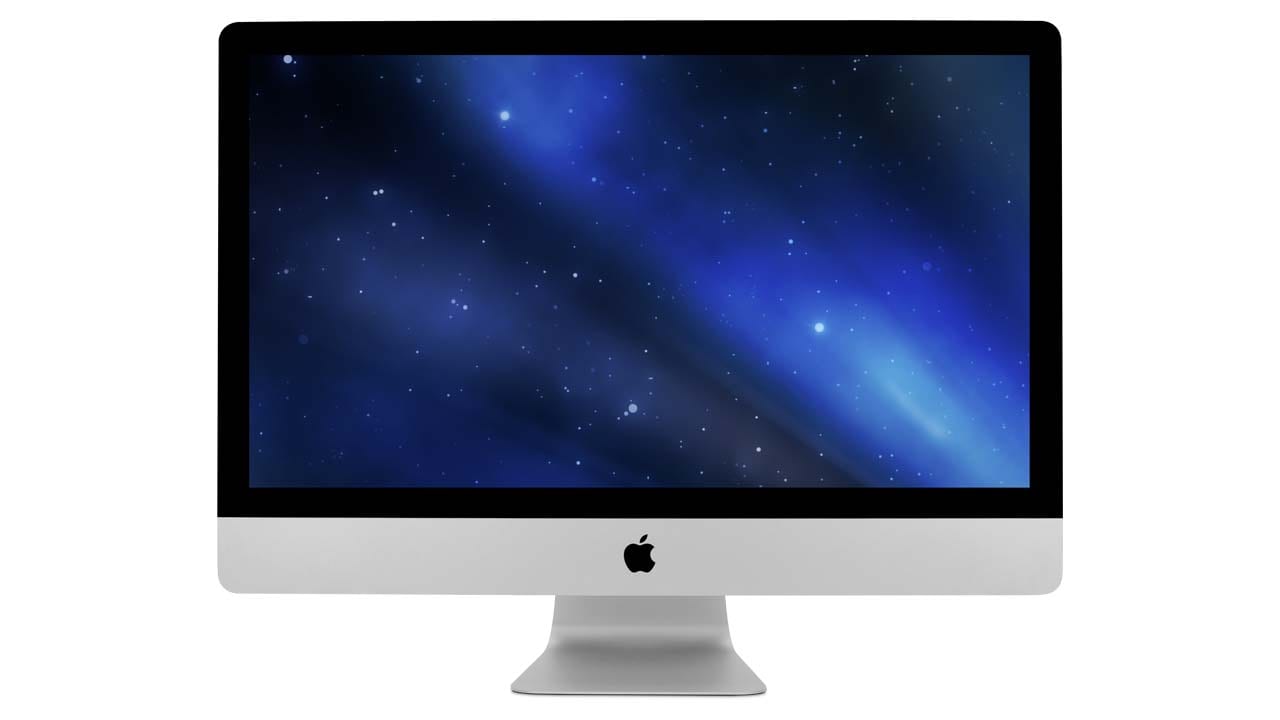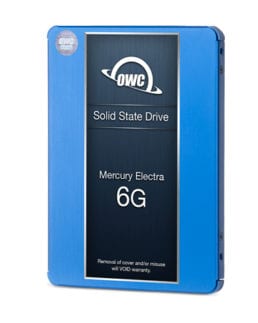 The rest of your iMac is still working great, but the time has come to replace the hard drive inside your iMac. Maybe it’s died, is dying, or perhaps you’ve simply grown beyond its storage capacity and need a larger drive.
The rest of your iMac is still working great, but the time has come to replace the hard drive inside your iMac. Maybe it’s died, is dying, or perhaps you’ve simply grown beyond its storage capacity and need a larger drive.
There’s a few options you have that will give your trusty iMac a few more years to continue being awesome.
Have Apple Repair It
If your iMac isn’t considered vintage, Apple is likely willing to provide service and can fix the drive for you. You can bring it to an Apple store or contact them for service/shipping options if an Apple Store isn’t nearby enough for you.
The downside to having Apple service your iMac is that while they will repair your iMac, they won’t upgrade it. There’s no saying, “Hey… while you’re in there could you add 2.0TB drive instead? I’ll pay extra.” Nope. They’ll fix it to how it originally shipped. And if you’re out of warranty it, like any repair work, it’s going to cost money.
Also, you’ll likely have to give up your computer for a few days, and if you don’t have a spare computer to get you by in the meantime, that downtime can be little excruciating.
Speaking of warranty… if your iMac breaks under warranty, or any Mac for that matter, always go the Apple Warranty Repair route. It’s free, and that’s what warranties are for anyway.
Apple Repair Advantages:
- They do all the work
- Under warranty, it’s free
Go DIY – The Flexible/Upgrade Option
 There’s a few advantages to going the DIY route. One major advantage is the opportunity to upgrade the 3.5-inch drive in a 27-inch iMac drive all the way up to the largest 10.0TB drive, or upgrade to the speed capabilities of an SSD.
There’s a few advantages to going the DIY route. One major advantage is the opportunity to upgrade the 3.5-inch drive in a 27-inch iMac drive all the way up to the largest 10.0TB drive, or upgrade to the speed capabilities of an SSD.
You’ll get all of that with likely minimal downtime, especially if you do the upgrade yourself with MacSales.com’s iMac installation videos, and likely cheaper than what it would cost for Apple to restore to the stock drive. You can see why tens of thousands of Mac enthusiasts have upgraded their iMac… DIY style.
Related: How to Upgrade the Main Drive in a 21.5-inch iMac 2017
The iMac does have a special need if you’re going this route in that the hard drive needs to report its temperature to the system in order for the iMac fans to run at the correct speed. Without this reporting, the iMac will simply spin its fans full blast to ensure it doesn’t overheat.
The good news is that our iMac DIY upgrade kits come with an OWC in-line digital thermal sensor that allows you to upgrade to the iMac’s main drive to the SATA drive of your choice.
DIY Advantages:
- Upgrade to any size hard drive or SSD you want
- Save on labor cost when you do it yourself
- Save on downtime
If you don’t want to perform the DIY upgrade, have one of our Apple Certified Technicians perform the upgrade for you. Simply give MacSales.com a call at 1-800-275-4576 or +1-815-338-8685, and our friendly support staff will take care of everything.
External Drive – The Fastest and Faster Drive Option
If you’ve watched our installation videos and have decided opening up your iMac just isn’t for you, and you don’t want to send it in for service, you can go the external route. Simply grab the Thunderbolt drive of your choice, and boot from that. Thunderbolt is the perfect interface for a boot drive as it’s essentially an external PCIe port, which is actually much faster than the SATA connection used in the iMac’s main drive bay.
The downside to this approach is that you’re still going to have an internal hard drive in the iMac, and should that drive ever go bad and stop reporting it’s temperature to the system correctly, the fans in your iMac are going to ramp up to full speed. In short, just because you ignore the hard drive inside the iMac — it may not ignore you. It could last, but it is something to consider.
Now let’s talk RAID. You can grab an OWC ThunderBay 4 and RAID multiple hard drives or SSDs together to experience drive performance up to 1,346MB/s. With the four drive bays in a ThunderBay 4, you can RAID 2-3 SSDs to serve as your main drive, and use a hard drive as a Time Machine backup, all from one external drive. It’s definitely one flexible and powerful external Thunderbolt drive.
Thunderbolt Drive Advantages:
- No installation required
- Easier to maintain and access external drives
- Can be faster than the iMac’s internal drive bay
- Flexibility to use multi-drive RAID enclosures
Choose What’s Best for You
Whichever option you decide, choose the one that you’re most comfortable with and fits your needs best now and into the future.
Happy computing!








Apple had a recall on seagate drives installed in my 21” 2009 imac in 2013. I was out of applecare warranty and apple provided the service entirely for free. After the work was completed, Apple presented documentation with a detailed breakdown of what I would have been charged if I had to pay. I assume they were going to bill seagate with it or write it off. The total charge was extremely expensive, if I remember correctly it was around $470.
I was impressed that Apple reached out to me. The replacement extended the life of my imac (for free) until February 2019.
I also never forgot the Apple price shown in 2013. So when my 2013 drive started exhibiting age related symptoms I instead I ordered on Amazon a 3TB disk from OWC that I used to replace my 2013 1TB drive today. The cost was $114 plus tax and included disk and installation kit.
I plugged my external time machine drive, booted and was prompted to restore from back up. Couldn’t be easier.
Thanks for sharing the information, Couple of days before my iPhone fall in a water and at that time it was working fine but now it is just blurred or showing a black screen and sometimes it is working quite good. What should I do? Please suggest me
Thanks & regard
urbanclap.ae/
Question-I have a beautiful late 2015 5K Retina iMac with the 2TB fusion drive and want to know what’s the biggest upgrade internal drive possible and the cost?
Hi, Anthony. All of your iMac with Retina 5K display upgrade options can be found with our My Upgrades tool: https://eshop.macsales.com/upgrades/imac16-2
Please feel free to reach out to our customer service team with further questions!
I bought a used 27″ 2011 imac that had been “refurbished” by another outfit and immediately ran into the fans running like a jet engine issue. Their solution was to install a utility to manage the fans manually. I use that utility sometimes when I am running cpu intensive software. However, two years ago I then upgraded my hard drive to a much larger one and installed it using the OWC sensor component and have been completely satisfied with the new system since then. I endorse it completely.
Great to hear! Thanks John!
We replaced the failing HDD in our iMac12,2 using an OWC kit.
No joy.
We can hear the boot chime, the fans rev loudly, no illumination from the LED panel.
It is a more than 300 mile round trip from the ranch (Wyoming) to an Apple tech (Colorado).
Advice?
Can you repair it?
Please?
-Bill 307-755-0874
Thank you for reaching out to us Bill! We will contact you directly by email for further assistance!
We look forward to working with you.
One downside not mentioned about DIY is that it voids any future service with Apple. I replaced the HDD myself with the OWC SSD kit fearing my HDD was going bad and causing system problems. Drive was not the issue and I later had to bring it to Apple to check the other components. They fixed it this time because they were already deep into repair when they discovered the SSD, so I got away with one, but told me they can’t ever work on my machine again due to the 3rd party, self installed hardware. Even if I was willing to pay for service.
Hey Matt! Upgrading your computer yourself will not void any warranty and it would actually be illegal for the manufacturer to do that (unless damage is caused by the DIY installation). They can request to work on the machine in the factory original state but can not void the warranty entirely.
If you have any questions on this, please let us know and we will be happy to explain!
My Apple-authorized repair center tried to tell me there may be problems with the third-party display on my 27″ 4ghz iMac that could effect their replacement of a failing hard drive. They said it might crack or something and couldn’t guarantee it.
The display that Apple Genius Bar installed as replacement under AppleCare warranty two years earlier. That I had not physically tampered with other than occasional cleanings. Hell, it was a mystery to me until just the other day how they got the case open on this thing in the first place.
Had to call Apple customer support and speak to a Senior Advisor (ALWAYS gotta go to a SA) and get him to set the repair center straight. WTF.
Replaced the HDD and kept the original, sold the 27″ iMac with a fresh 1TB drive.
The process was easy and fun. As pretty as it is outside, the inside of the iMac is a marvel of design and fabrication.
Before I ordered the kit, my palms got sweaty at the thought of removing the glass. No big deal.
Reassembly was also slick and easy.
Great article. One area of concern to me, is the videos. I have just replaced the Hard Drive in my mid-2010 iMac. The DIY videos are great but there needs to be much more detail and warnings regarding the removal and replacement of the four cables attached to LCD. Being the first venture into the Mac repair,
I found the information regarding this issue to be lacking. I broke the LCD temp sensor wire and also the main LCD cable by not being aware of how fragile they are. Overall, the videos are very helpful.
I wish that OWC could create a Mac Mini like case that could contain the internal hardware of the iMac 27″ Retina. This way, you can get a headless iMac.
So, you’re saying that on my 2014 27″ riMac, an external ssd attached with Thunderbolt 2 as my boot drive would be faster than my internal ssd?
Not entirely. The Thunderbolt interface is faster than the SATA interface used on the iMacs internal main drive bay. So you could RAID multiple SSDs together in a Thunderbolt external, which would then run faster then any SATA single drive. Or if you had a fast PCIe SSD card plugged in via Thunderbolt, that SSD would be faster than an internal SATA connected 2.5-inch internal SSD as well. Some iMacs with a PCIe slot based SSDs already go as fast the PCIe connection, so in those cases… an internal PCIe SSD based iMac would be the fastest option, but there’s not many aftermarket upgrade paths for those PCIe stick SSDs as there are to replace the drive in the main drive bay. Hope that helps clarify, and thanks for reading.